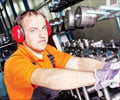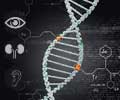Scientists from University of Florida and University of Wisconsin have identified a protein that plays a critical role in development of age-related hearing loss.
A protein which plays a pivotal role in age-related hearing loss has been identified by scientists from the University of Florida and University of Wisconsin.
The protein called Bak appears to be central to processes that cause oxidative damage to cells and lead to hearing loss.The new findings will help point the way toward a new target for antioxidant therapies.
"Within the mitochondria these proteins cause life, but when they're out they're deadly," said professor Christiaan Leeuwenburgh, Ph.D., chief of the biology of aging division at UF's College of Medicine and a member of the Institute on Aging.
One theory of aging holds that free radicals damage components of mitochondria, the energy centre of cells. Such damage accumulates over time, leading to a destabilization of the mitochondria, which leads to release of certain proteins.
The cell death triggered by the escaped proteins lead to physical effects we associate with aging, such as hearing loss.
Bak is known to play a role in the weakening of the mitochondrial membrane. The more of the protein present, the leakier the mitochondrial membrane becomes, allowing harmful proteins to travel out into the rest of the cell.
Advertisement
Hearing tests showed that Bak-deficient middle-aged mice were found to have hearing levels comparable to that of young mice.
Advertisement
The study is published in Proceedings of the National Academy of Sciences.
Source-ANI
TAN














